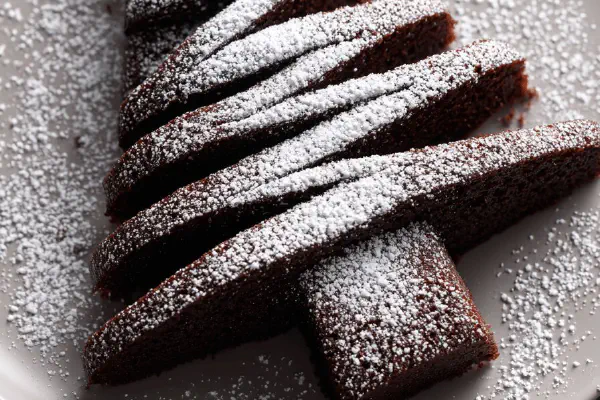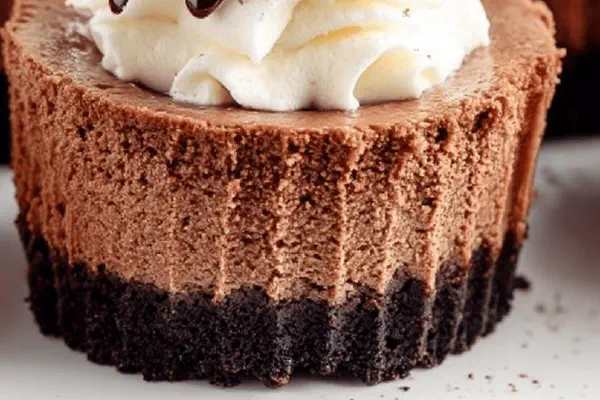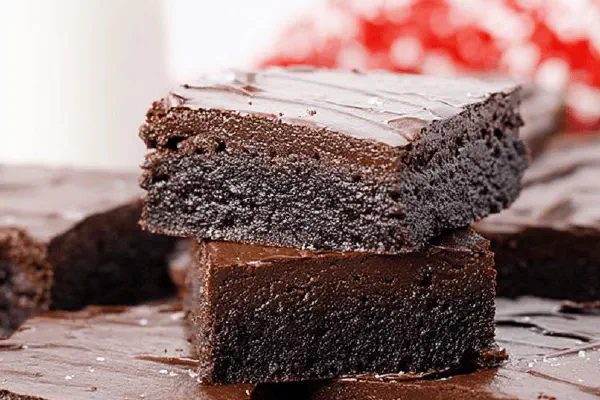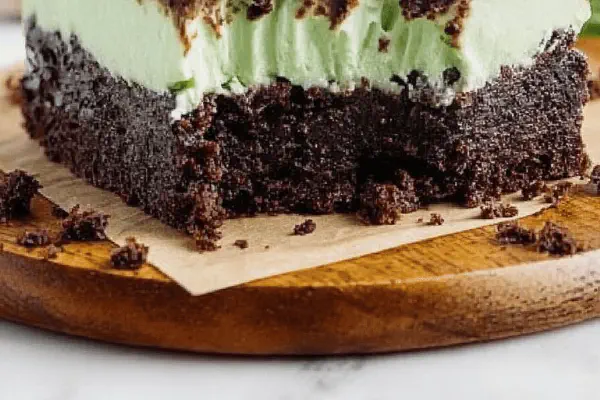Chocolate Pine Tree Cake

By Emma
Certified Culinary Professional
Ingredients
- 400 ml cake flour (about 1 2/3 cups)
- 150 ml Dutch-processed cocoa powder, sifted (about 2/3 cup)
- 10 ml baking powder (2 teaspoons)
- 8 ml baking soda (1 1/2 teaspoons)
- 350 ml buttermilk (about 1 1/2 cups)
- 100 ml crème fraîche
- 200 ml unsalted butter, softened (about 7/8 cup)
- 200 ml granulated sugar (about 7/8 cup)
- 8 ml pure vanilla extract (1 1/2 teaspoons)
- 3 large eggs
- powdered sugar for dusting
About the ingredients
Method
- Position oven rack in middle. Preheat oven to 175 °C (350 °F). Grease a 24 cm (9.5 inch) tube pan or pine tree shape mold well. If using pine tree mold, place on baking sheet to stabilize during baking.
- In medium bowl, sift together cake flour, cocoa powder, baking powder, and baking soda. Set aside.
- In another bowl, whisk buttermilk and crème fraîche together. Set aside.
- In large bowl, beat softened butter and sugar until creamy and light, about 4 minutes. Add vanilla and eggs one at a time, beating well after each addition, until smooth and pale.
- Alternately add the dry ingredients and the buttermilk mixture to the creamed butter mix, starting and ending with dry ingredients. Mix until just combined. Avoid overmixing.
- Pour batter into prepared pan. Tap lightly to level surface. Bake 50-55 minutes, or until center tests clean with a toothpick.
- Let cake cool in pan 15 minutes. Invert onto wire rack and cool completely before dusting with powdered sugar.
- Serve slices dusted with powdered sugar. Optional: chocolate sauce on the side.
Cooking tips
Chef's notes
- 💡 Cream butter and sugar thoroughly. Use softened butter, never melted or cold. Achieve light, fluffy texture by beating at medium speed 3-5 minutes. Adding eggs slowly prevents curdling—add one at a time, beat until smooth before next. Vanilla at egg stage, not before. Sift dry ingredients including cocoa for uniform color, avoid lumps. Alternate adding dry and wet in parts to maintain batter airiness, start and end dry. Folding technique important – gentle but full incorporation. Overmixing kills rise and texture.
- 💡 Use Dutch-processed cocoa not natural for mellow, deep flavor and smoother bitterness. Natural cocoa powder changes pH, affects baking soda reaction and color. Cake flour lowers gluten, makes crumb tender versus all-purpose. Grease molds thoroughly to prevent sticking, especially intricate pine shapes. No parchment in molds; too fragile, crumbs stick and tear. Stabilize pine mold on baking sheet to prevent tipping during bake. Oven rack placement centralizes heat; consistent rise depends on it.
- 💡 Baking times vary—start checking at 45 minutes then every 5. Toothpick test must come out clean but not too dry. Cooling in pan 15 minutes avoids cracking when unmolding. Then full cool on wire rack prevents soggy bottom and crumbled edges. Powdered sugar dusted last second before serving to keep snowy effect. Chocolate sauce always serve separately to maintain dry surface, avoid melting sugar. Leftover slices wrapped tightly, stored cool or fridge, reheat gently wrapped in foil to keep moistness without drying.
- 💡 Mix buttermilk with crème fraîche until smooth, no lumps. Keeps moisture balance. Buttermilk brings tang without heaviness compared to sour cream alternatives. Crème fraîche adds richness with less weight, no greasiness. Substitute crème fraîche with light coconut cream for tropical undertone, careful impact on structure. Swap butter with mild avocado oil for dairy-free fat option, adds moistness subtly without flavor dominance. Keep batter consistency same when swapping fats.
- 💡 Dusting with green matcha and powdered sugar adds pine dimension with bittersweet contrast. Adds visual depth without sugar overload. Work quickly after cooling to avoid sugar melting. Use tube pan for ring shape or pine mold for holiday touch. Both impact final bake time slightly; monitor closely. Don't overfill pans to prevent uneven rise or spilling. Tap pan gently to level batter, remove air bubbles but avoid overmixing.
Common questions
Why use cake flour instead of all-purpose?
Cake flour lowers gluten which makes crumb tender and soft. All-purpose flour makes denser crumb. Cake flour sifts finer, blends better with cocoa. Gluten affects texture. For pine shapes, softer crumb holds but doesn’t get tough. Not big rise difference but noticeable feel in mouth.
Can I substitute sour cream for crème fraîche?
Sour cream is heavier, more tangy. Crème fraîche lighter fat, richer but less dense. Using sour cream might make cake denser, moister but less fluffy. If using sour cream, reduce buttermilk slightly because it adds moisture too. Coconut cream can substitute for dairy-free, but affects texture and flavors tropical. Watch mixing times to adjust for liquid variations.
Cake sticks to mold or breaks when unmolding?
Usually greasing is not thorough or mold not prepared right. Pine mold edges require careful grease application. No parchment paper – it’s fragile with shapes. Let cake cool 15 minutes before unmolding. Cooling too fast or too cold causes cracking. Tap pan to loosen edges if needed. Try silicone molds if sticking repeats. Light dusting with flour on grease helps sticky issues.
How to store leftover cake properly?
Wrap slices tightly in plastic wrap or in airtight container. Keeps moisture in but cake still breathes. Refrigerate if warm climate; cake can dry out, so double wrap helps. Freeze in layers separated by parchment. Thaw wrapped at room temp. Reheat slices in foil at low oven temperature or microwave wrapped briefly, avoids drying. Avoid open air storage; cake texture degrades quickly.



